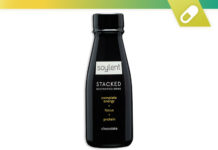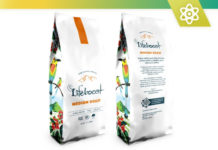Coconuts are thought to be among the most nutritious fruits in the world, and for good reason. They're packed with beneficial fats, antioxidants, and micronutrients that safeguard organs. Nowadays, coconut is utilized in a variety of food items, such as coconut oil, flour, milk, and water.
The fruit is found in almost every retail aisle in one form or another.
It is awash with nutrients, including medium-chain triglycerides, which have numerous health benefits. It's a fast fuel supply for your body, which helps fight off illnesses and chronic diseases.
Coconut Products
There are many kinds of coconut products that have different uses in the kitchen and for health care. This is a list of the varieties of coconut you can discover at the local grocery store:
- Coconut meat: The flesh is contained in the outer white inner lining of the coconut husk. It's soft and can be removed from the inside before being consumed raw or used to create other coconut products, such as milk, oil, and flour. Dried coconut meat is typically consumed as a snack or as a topping for yogurt-based desserts, baked goods, and more.
- Coconut oil: is made by pressing fresh or dried coconut meat. Coconut oil is composed of the fats found in the coconut that turn into liquid once temperatures rise to around 78°F. Coconut oil is great for hair, skin and cooking is extremely popular due to it's antibacterial and anti-inflammatory, and healing properties.
- Coconut milk: It is a liquid (also known as coconut cream) located in mature coconut meat. Coconut milk is a natural source of fat acids that can be added to smoothies or baked goods, as well as sauces and bakeware to create a smooth texture. It can be purchased in boxes or in cans in most grocery stores, but it is also possible to make at home. To make coconut milk, you need to chop and then blend until it becomes an opaque liquid. afterwards strain.
- Coconut flour: actually not “flour” but it is made of dried and ground coconut meat, which creates an almost flour-like texture which can then be utilized for baking. Coconut flour doesn't have any grains and is preferred by gluten-free and Paleo diets. It's now widely accessible in supermarkets and is used for muffins, pancakes cookies, and other foods that require flour.
- Coconut water: The clear liquid found in a young, green coconut is a rich source of phytochemicals, vitamins, and minerals. It is a popular drink for replenishing electrolytes and aiding in detoxification.
- Coconut butter: not the typical butter. The coconut butter originates from the fruit's flesh when it's crushed to form the butter-like texture. It is a great topping for baked goods or as a component in recipes to give the texture of a creamy.
- Coconut sugar: Despite not being made from coconut, coconut sugar is made from sap from flower buds on the palm tree's stem. The sap is cooked and then dehydrated, leaving behind brown-colored sweet granules of sugar that can be used for baking or cooking.
- Coconut Aminos: are made of coconut aminos. They comprise only two components: the coconut tree sap and sea salt. Sap from coconuts can be “tapped” from the coconut blossoms, the flowering section of the tree that was present before when coconuts developed. It is then subjected to an alcoholic process before being mixed with sun-dried mineral-rich sea salts to make coconut aminos.
Nutrition Facts
Coconuts are a great source of nutrients, including healthy medium-chain fats. The three fats most commonly present in them are lauric acid, caprylic acid, and capric acid.
Unlike the long-chain fatty acids in plant oils, medium-chain fats are digested more easily. They provide instant energy and don't have to be saved as fat.
One ounce of raw coconut flesh (about 45g) comprises about:
- Calories: 159
- Total Carbohydrates: 6.8 g
- Fiber: 4 g
- Sugar: 2.8 g
- Total Fat: 15.1 g
- Saturated Fat: 13.4 g
- Polyunsaturated Fat: 0.2 g
- Monounsaturated Fat: 0.6 g
- Trans Fat: 0 g
- Protein: 1.5 g
- Sodium: 9 mg (0.4% DV*)
- Manganese: 0.7 mg (30% DV)
- Copper: 0.2 mg (22% DV)
- Selenium: 4.5 mcg (8% DV)
- Iron: 1.1 mg (6% DV)
- Zinc: 0.5 mg (5% DV)
- Phosphorus: 50.8 mg (4% DV)
- Potassium: 160 mg (3% DV)
- Magnesium: 14.4 mg (3% DV)
- Folate: 11.7 mcg (3% DV)
- Thiamine: 0.03 mg (3% DV)
Daily Value: Percentages are calculated on a diet that provides 22,000 calories daily.
Benefits
Here are a few of the best coconut benefits:
1. Provides Energizing Healthy Fats
The majority of fats found in this fruit are medium-chain triglycerides (MCTs), which are metabolized in the body differently from other kinds of fats. MCTs function as an immediate energy source processed in three steps to convert into fuel, unlike long-chain fatty acids, which undergo a 26-step procedure.
MCTs are more digestible and also more minor, which allows for an increase in cell permeability. They don't store as fat. The liver transforms them and then converted into energy right away.
Additionally, healthy fats aid in improving memory and brain function, decrease inflammation, and can help increase the levels of healthy (HDL) cholesterol. Recent research suggests that eating MCTs can reduce your calorie consumption compared to long-chain fatty acid consumption results.
2. Rich in Manganese
Coconut is a great source of manganese, an essential mineral needed for a variety of bodily functions. Research suggests that manganese is beneficial to bone health, cognitive function, and breathing. It also aids in maintaining good iron levels, improves wound healing, and assists in weight loss.
3. Has Antibacterial Effects
Lauric acid is the main ingredient in coconut and possesses antibacterial qualities. Lauric acid is one kind of fatty acid that can have impressive effects on the immune system. It transforms into monolaurin in the body and is known as an effective antibacterial drug.
This is why coconut is commonly used on the hair, skin, and teeth to fight bacteria. Coconut can also be consumed to stop the growth of bacteria, such as food poisoning or staph. In addition, lauric acid and other fats can help fight viral and fungal diseases.
4. Provides Fiber
Coconut is a great source of fiber that assists in regulating digestive health, lowering LDL cholesterol and triglyceride levels, and building up the colon's walls. Foods high in fiber can also help support the healthy control of blood sugar levels and reduce the risk of insulin resistance.
5. Contains Powerful Antioxidants
Consuming coconuts is proven to improve our antioxidant levels, which can help prevent fat and the oxidation of proteins that could cause health issues. The primary antioxidants in coconuts are caffeic acid as well as salicylic acid, and gallic acid. They help neutralize free radicals as well as protect cells from harm.
6. May Help Control Blood Sugar
A study published in the Journal of Complementary and Integrative Medicine involved 80 volunteers who consumed an ad hoc diet of 100 grams of fresh coconut and 100 grams of groundnuts or groundnut oil over 90 days. After 90 days, both groups experienced decreases in blood sugar levels during fasting, and the coconut group experienced significant improvement in blood sugar levels and a substantial decrease in body mass.
7. Shows Promise in Combating Alzheimer's Disease
Because MTCs are converted into a ketone body, this fruit is thought to be beneficial in helping people suffering from Alzheimer's improve their cognitive function and also assist in stopping the progression of Alzheimer's.
A pilot study from Spain revealed that patients suffering from Alzheimer's disease showed improvement in their cognition following the consumption of the Mediterranean diet enriched with coconut oil. Fourty-four Alzheimer's patients were split into two groups (22 people per group): one group that followed the coconut oil-rich Mediterranean diet over 21 days and a control group.
What findings did the researchers come across? “After treatment with coconut oil, improvement in temporal and episodic orientation as well as semantic memory were noted,” according to the study's authors.
8. Versatile and Easy to Incorporate to Diet
Due to the variety of items that come from this fruit, it's simple to include it in your food regimen. It is a great complement to any kind of food (more on that later). You can also pick the fruit itself along with coconut oil, flour, water, and so on.
9. Helps Improve Teeth Health
Pulling coconut oil can be a fantastic method to improve your oral health and achieve an attractive smile. It's a great way to fight tooth decay, reduce gingivitis and plaque, reduce oral hygiene, and improve the whiteness of teeth.
10. Fights Yeast Infections
Candida albicans is a cause of yeast infections. However, research has shown that coconut oil may reduce intestinal infection of C. albicans, consequently lessening the likelihood of contracting an infection with yeast.
Risks and Side Effects
Coconut allergies are possible, but they are extremely rare. If you are experiencing allergy symptoms like itchiness and redness, swelling, or trouble breathing, stop taking coconuts immediately.
The fact that a product may be made from coconuts doesn't necessarily mean that it's healthy. Many products, including dried coconut and oils, could be bleached, refined, chemically processed, or contain additional sugars, preservatives, or even a few. Check the label attentively and select products made of extra virgin coconut oil whenever possible.
Fruit is rich in calories, so it is recommended to consume it in moderate amounts. A small amount is enough and will increase the energy level quickly. However, don't consume too much of the foods that are made from it.
How to Open a Coconut (Plus Recipes)
Coconuts are characterized by a tough outer husk, which protects the healthy meat of the fruit inside. It can seem almost impossible to remove the fruit from its shell; however, there is an approach that makes it much more straightforward.
A mature coconut is characterized by a hard shell with hairy brown fibers on the exterior. If you're considering buying a coconut, ensure there aren't any cracks or swollen areas.
Here's how you can open one:
- To open it, begin by making three holes in the other end using an unclean skewer or screwdriver. This allows you to drain the water. You'll need to put a cup beneath to empty the fruit.
- Then, secure it using a kitchen towel, and with a clean hammer or mallet, press the center of the fruit, making sure to tap it all the way around until the fruit cracks into two pieces. Use your mallet and hammer to cut up the fruit into large pieces.
- Last, you can use a butter knife to pull the meat out of the shell. If there's brown skin, you can use a peeler to remove it.
You now have fresh coconut meat and water! It can then be grated or chopped for a delicious food item or snack.
Looking for ways to make use of coconut products? Here's a list of recipes for body care and food to help you get started …
Food Recipes:
- Coconut Flour Pancakes
- Berry Chia Seed Smoothie Bowl
- Chocolate Caramel Coconut Flour Brownies
- Thai Coconut Soup with Chicken and Ginger
- Coconut Kefir
Body Care Recipes:
- Homemade Anti-Dandruff Shampoo made from Coconut Milk
- Homemade Coconut Lavender Shampoo
- DIY Hair Mask for Damaged Hair
- DIY Coffee Scrub
Conclusion
- Coconut is considered to be one of the healthiest foods in the world, and that's why it is used in the production of many healthful products for the body and food. In addition to coconut oil, coconut flour, and milk, numerous varieties of the fruit are available.
- It's eaten worldwide because it's brimming with nutrients, including healthful nutrients like fiber, fats, and vitamins such as manganese. It aids digestion, increases brain and bone health, and aids in fighting bacteria.
- It is employed in recipes, on hair and skin, or even to clean your teeth.













![Bowflex Max Total: 2024 Fitness Workout Exercise Machine [Review] Bowflex Max Total: 2020 Equipment Review For Complete Upper and Lower Body Workout](https://www.advancedliving.com/wp-content/uploads/2019/12/Bowflex-Max-Total-218x150.jpg)


